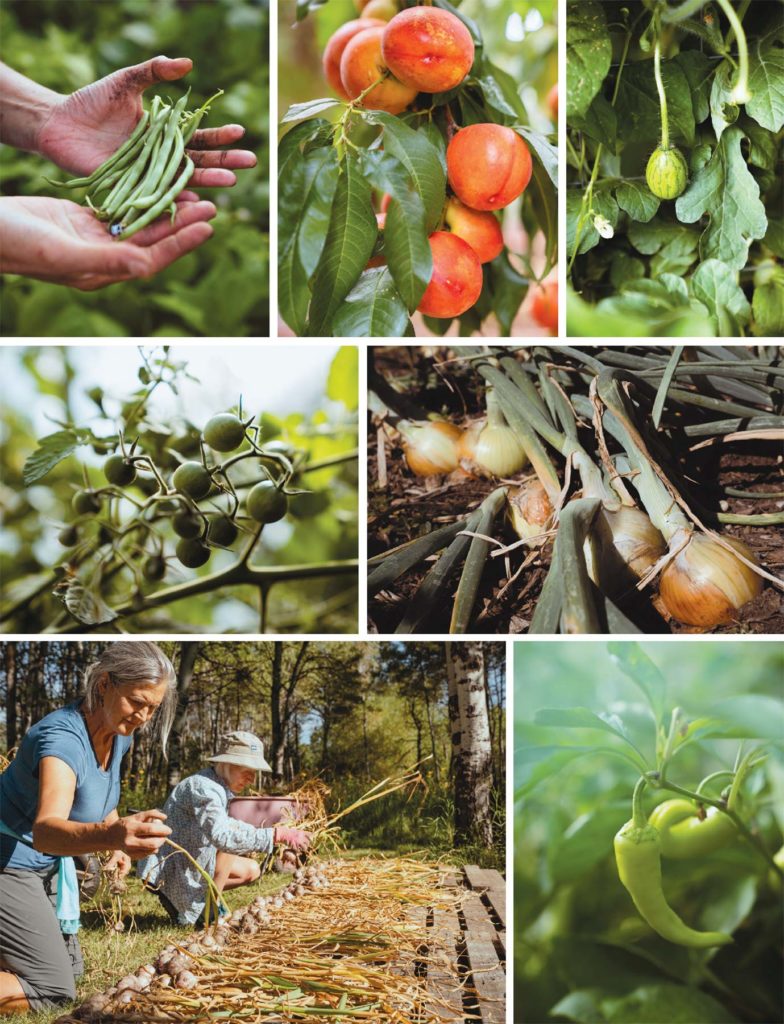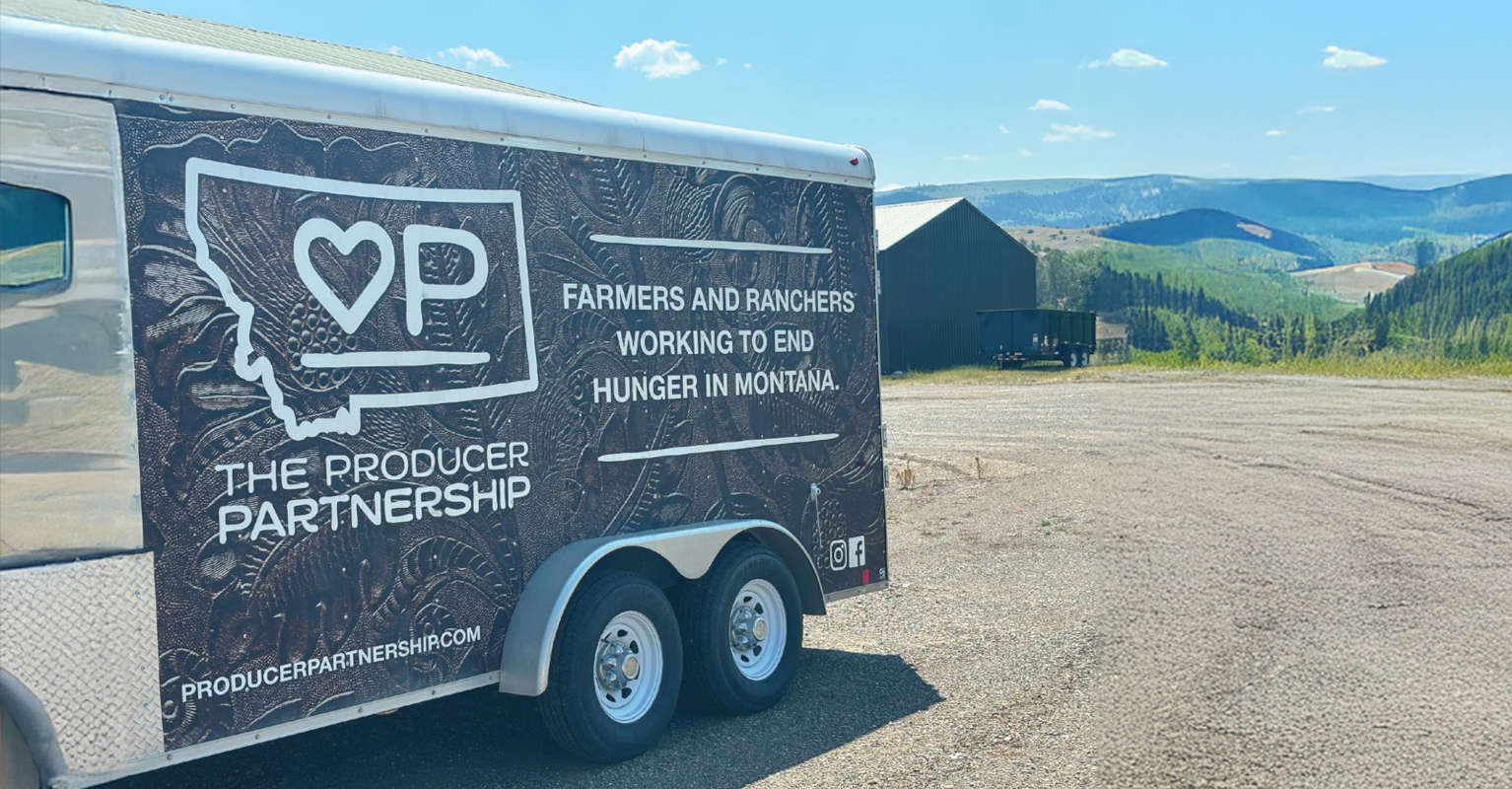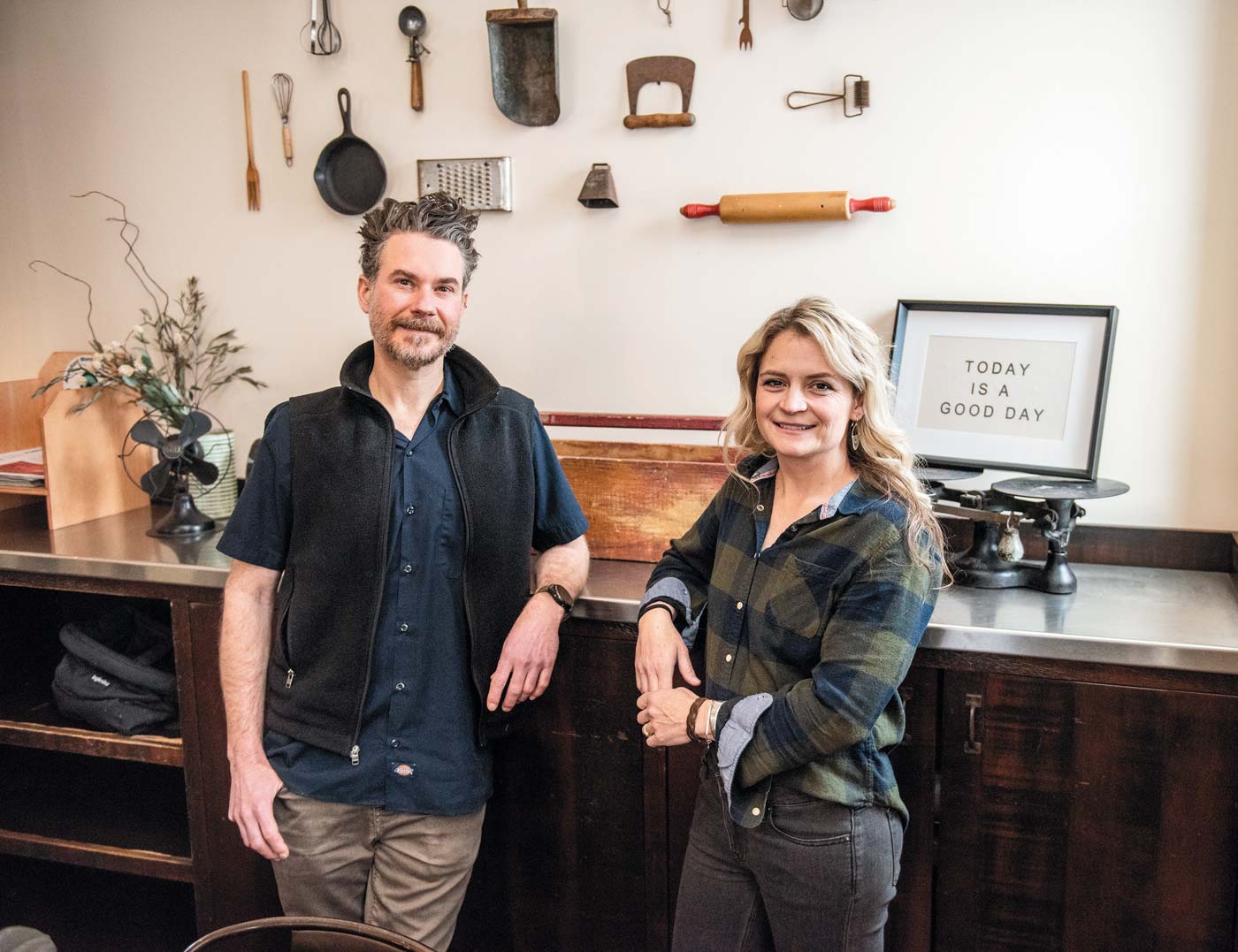Annalisa Pedraza and Richard Weaver at the Spring Creek Communal Garden.
The Spring Creek Communal Garden nestles in just west of the Valley View Golf Club between Fairway and Spring Creek Drives. Annalisa Pedraza meets me at the western edge of the garden with a warm smile and welcomes me behind the fence. Pedraza, founder of Rising Crane Permaculture, managed this community garden until recently, when she passed management along to a core group of women who are serious community gardeners. “I call them the matriarchs,” she says with fondness.
It’s a blustery day in early May. Curtains of rain swirl across the Gallatin Valley. One such shower passes over and we duck into the open bay of the tool shed. Pedraza explains the structure of the community to me. The garden and the shed both sit on property that belongs to Richard Weaver, who founded the garden in 2005. As the landowner, Weaver donates use of the land, his water rights, his old RV shed—which now functions as this tool shed—a community kitchen, and the sunken greenhouse.
In the tool shed, three chalkboards and a whiteboard on the south wall highlight important messages. One outlines the bed and row preparation sequence: “1. Weed bed edge to edge; 2. Broad fork; 3….” There are notes for the sweet mulching. “Prep Peas” tops the Jobs-to-Do board. A fourth long blackboard maps all of the summer beds and what was planted when. This early in May, many of the beds are still blank. But the garden’s accountant and a core member, Sue Hepburn, has come to see about that despite the drizzle. She politely shakes my hand and excuses herself out into the rain to prep and plant two beds of peas.
In the early days, the garden operated as a “come as you want” family-style model, Pedraza explains as we watch the drizzle. Everything—work, harvest—was on the honor system. But a community garden has a lot of moving pieces, and Weaver was candid in an email to me: A garden “requires one or more passionate champions to make it work … Waning enthusiasm as the years progress is the biggest challenge.” In 2010, Pedraza met Weaver and became involved with the garden, eventually becoming the garden manager—the passionate champion.
Pedraza radiates gentle passion for more than casual gardening. During her tenure as garden manager, she implemented many elements of permaculture in the garden and she still offers her expertise to Spring Creek as a friend and consultant. Permaculture is an approach to land management that mimics flourishing natural ecosystems. As Pedraza puts it, the permaculture way is to create lots of variety and abundance.
Pedraza stumbled into permaculture when she first moved to Montana a decade ago, after a childhood in Minnesota and a roaming young adulthood that included time living in the Philippines. Shortly after moving to Belgrade, she saw an ad in the paper for a workshop run by Mona Lewis at the Paradise Permaculture Institute. She attended and immediately knew “this is my niche. This is why I’m here in the world.”

“I imagine each neighborhood having their own community garden, creating beauty and abundance one garden at a time, one neighbor at a time.” —Annalisa Pedraza
Abundance and variety were certainly two words that came to mind when we wandered next into the sunken greenhouse on the south side of the communal kitchen. Entering the greenhouse—recessed six feet into the ground—is like stepping into another world. Pedraza corrects me: It actually is stepping into another world. The U.S. Department of Agriculture designates agricultural zones based on the average annual extreme minimum winter temperature. The Gallatin Valley sits between Zones 4a and 4b, but this sunken greenhouse creates a pocket of Zone 6—the agricultural equivalent of growing along Flathead Lake or in the middle of Kansas. Peach trees blossom in the greenhouse and, as we enter, rich green color and the smell of sweet earth sweep over me. Magic. Nectarines, peaches, apricots, plums, cherries, figs, goumi berries, goji berries, honey berries, prince magnolia—all growing right here in Bozeman.
Magic, but it’s still “not a very balanced soil,” Pedraza explains. “We have a pill bug problem,” which she thinks is evidence of not enough fungal diversity. She is in the middle of a year-long course in rebuilding soil health, offered online by Elaine Ingham, a co-author of the USDA’s Soil Biology Primer. “I’m about to start the microscopy section,” Pedraza says, and she’s eager to learn more about the greenhouse soil, to understand how to bring the greenhouse microcosm into balance.
When we leave the greenhouse, the sun is shining. Hepburn has been joined in the pea beds by several other members: a young girl and her mother, and two other women. The garden has members that range in age from 20 to 80, Hepburn says. These women are planting peas in beds of rich, dark soil. Between the beds, straw mulch controls the weeds. Pedraza points out the herb garden, the apple and pear tree, the elderberry bushes.
Weaver envisions the garden as a model of urban agriculture, “as a viable alternative to lawns and ornamental plants [and] a better use of our precious water resources.” A community garden can’t provide all of a household’s nutrition, but it can go a long way. For Huyen Bui, one of the pea planters and a member of the garden for the last three years, the garden provides her with produce for at least six months out of the year.
With the permaculture ethic, a self-sustaining financial model (annual membership fees cover the costs of tools and supplies), and a core group dedicated to the garden, the Spring Creek Communal Garden is in good hands. Pedraza is now developing a new four-household family co-op garden by Mt. Ellis called Bridger Peaks. In addition to designing and implementing this new community garden, she has several consulting jobs through Rising Crane Permaculture. She’s working toward a vision of the Gallatin Valley full of community gardens. “I imagine each neighborhood having their own community garden, creating beauty and abundance one garden at a time, one neighbor at a time.”
Surveying the Spring Creek Communal Garden, I indulge in Pedraza’s vision. I imagine lawns turned into garlic beds. Neighbors planting peas together. A tomato sauce potluck in August. A future of sustenance and community, incubated in community gardens. It looks to me like a future worth pursuing.




